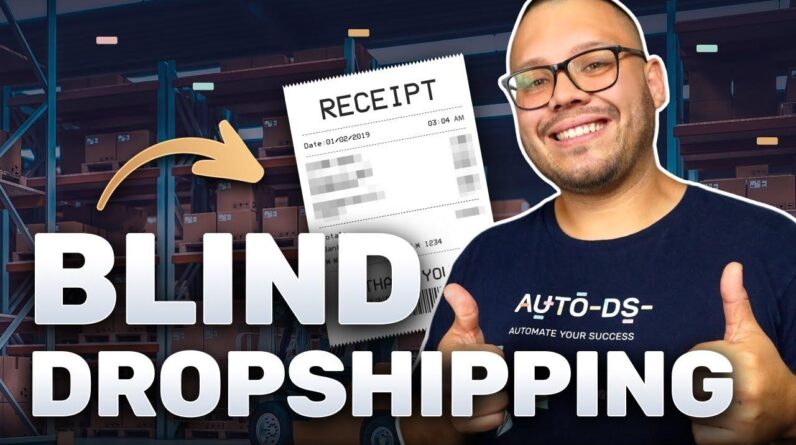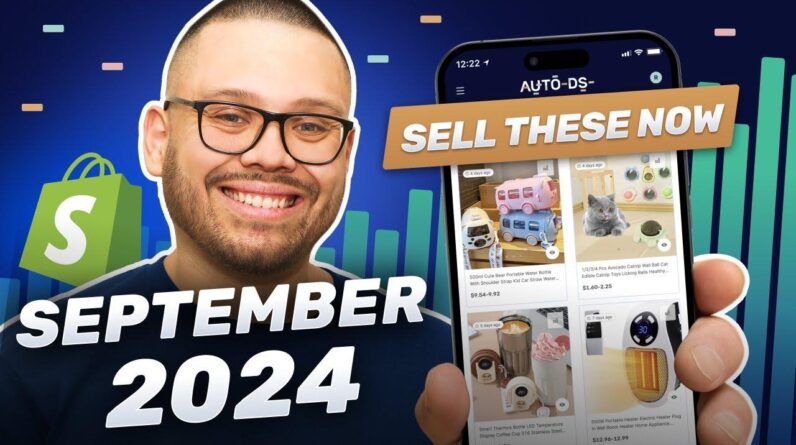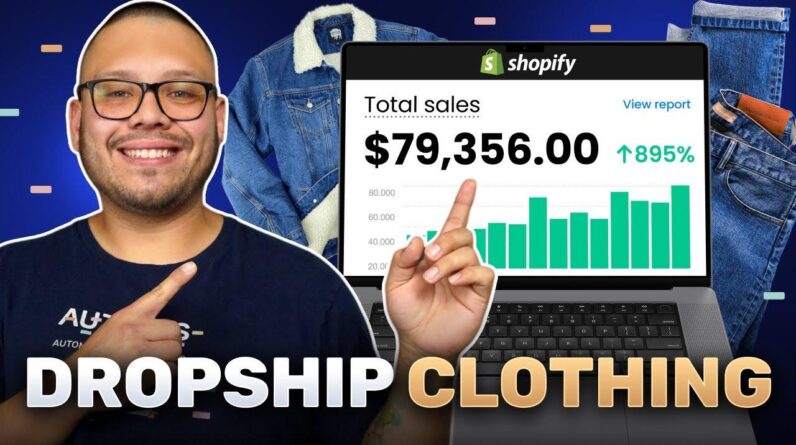Welcome to our latest blog post, where we delve into the ever-evolving world of e-commerce and explore the age-old debate: Amazon FBA vs. Dropshipping. In the face of 2024's rapidly changing landscape, aspiring entrepreneurs are faced with crucial decisions that could shape their business journeys. Should you invest in the robust infrastructure of Fulfilled by Amazon, or embrace the flexibility of dropshipping?
In a recent YouTube video that sparked dialogue and opinion, the creator tackled these pressing questions head-on, challenging conventional wisdom and outdated beliefs surrounding both business models. The discussion sheds light on the misconceptions that often cloud the decision-making process, particularly the enduring myths about shipping times and profitability.
Join us as we unpack these insights and misstatements, examining the pros and cons of each approach to help you determine which model aligns best with your aspirations. Whether you're a seasoned seller curious about diversifying your strategy or a newcomer eager to step into the e-commerce arena, our exploration promises to illuminate the path ahead. Let’s dive in!
Table of Contents
Understanding the E-commerce Landscape in 2024
“`html
In 2024, the e-commerce landscape continues to evolve, with both Amazon FBA and dropshipping offering unique advantages. Many entrepreneurs are drawn to Amazon FBA due to its reputation for reliability and speed in delivering products to customers. However, claims that dropshipping inherently leads to slow shipping times are becoming increasingly outdated. The reality is that reputable suppliers in the dropshipping arena are now prioritizing faster shipping options to meet customer expectations. In fact, most dropshippers focus on sourcing products from suppliers who can deliver within a timeframe that competes directly with Amazon, often within two weeks or less. This shift has made dropshipping a more viable and attractive business model in today's marketplace.
Another key aspect to consider is the initial investment and overhead costs associated with each model. With Amazon FBA, sellers often face higher upfront costs related to inventory, shipping fees, and storage fees, creating a robust but potentially burdensome financial commitment. In contrast, dropshipping tends to have lower startup costs, as sellers do not need to purchase inventory upfront. This allows for greater flexibility, particularly for new entrepreneurs. However, it's essential to evaluate potential profit margins, supplier reliability, and customer service capabilities, as these will ultimately dictate long-term success in either business model. Therefore, assessing your unique situation and objectives is crucial when deciding between these two e-commerce strategies.
“`
Comparative Advantages of Amazon FBA and Dropshipping
html
When it comes to Amazon FBA, one of its primary advantages lies in the streamlined logistics and increased customer trust that comes with the Amazon brand. Sellers benefit from Amazon's established fulfillment network, meaning once a product is listed, they can focus primarily on marketing and sales. Products fulfilled by Amazon typically enjoy faster shipping options, often shipped within 24 hours. This not only enhances customer satisfaction but also leads to higher chances of product rankings due to positive reviews and the Prime badge associations. Moreover, Amazon handles returns, storage, and other customer service aspects, freeing sellers to scale their business without getting bogged down by operations.
In contrast, dropshipping offers its own unique set of advantages that appeal to aspiring entrepreneurs. One of the most appealing aspects is the minimal upfront investment required to get started. With dropshipping, sellers don’t need to purchase inventory upfront, reducing financial risk. This model allows for greater flexibility in terms of product offerings, enabling sellers to pivot quickly based on market trends without the burden of unsold stock. Additionally, suppliers are increasingly recognizing the demand for faster shipping times, enabling successful dropshippers to offer delivery options that can compete with Amazon’s speed. This shift has made dropshipping a more viable option for e-commerce businesses in 2024.
Debunking Myths: Shipping Times and Customer Expectations
html
One of the most prevalent misconceptions surrounding dropshipping is the notion of long shipping times, typically pegged at 20 to 30 days. This outdated belief suggests that customers will be unwilling to wait for their orders. However, modern dropshippers have adapted to a rapidly changing market environment. Today’s suppliers frequently offer much shorter delivery windows, often between 5 to 14 days, making it feasible for dropshippers to meet customer expectations. By partnering with reliable suppliers who prioritize efficient shipping methods, dropshippers can provide a shopping experience that rivals that of Amazon FBA, effectively countering the myth that dropshipping inherently means waiting weeks for delivery.
When customers make purchase decisions, their expectations have evolved, influenced by their prior experiences with prompt delivery services like Amazon Prime. This means consumers are now more willing to tolerate shipping times of up to two weeks, especially if they perceive value in the products offered. In fact, the flexibility and variety inherent in dropshipping allow businesses to cater to niche markets that traditional retail models, such as Amazon FBA, might not serve as effectively. Here’s a quick comparison of the shipping expectations customers have for both models:
Shipping Model
Typical Shipping Time
Customer Expectation
Amazon FBA
1-5 days
Very fast, typically Prime eligible
Dropshipping
5-14 days
Acceptable with proper communication
Strategies for Success in Your Chosen Business Model
html
The key to thriving in either Amazon FBA or dropshipping lies in understanding your market and your product niche. Research is paramount; diving deep into your target audience will guide your product selection and marketing strategies. Leverage tools such as Google Trends and various keyword research platforms to identify current demand. Additionally, consider the significance of supplier relationships. For dropshipping, forging strong partnerships with reliable suppliers can help mitigate common shipping delays. Conversely, Amazon FBA sellers must ensure their logistics are streamlined to optimize inventory turnover and fulfill customer demands efficiently. Always be open to embracing new trends and adapting strategies based on real-time feedback from your customers.
Marketing is another cornerstone that can significantly influence your success in either model. For dropshipping, focus on establishing a robust online presence through social media and targeted advertising. Utilize eye-catching visuals and compelling content to attract potential buyers, and consider influencer partnerships to expand your reach. With Amazon FBA, effective product listings can make a world of difference; ensure your listings are optimized with engaging titles, clear descriptions, and high-quality images. Additionally, consider investing in Amazon PPC (Pay-Per-Click) campaigns to enhance visibility. Below is a simple table comparing some essential strategies that can elevate your performance in both e-commerce models:
Strategy
Amazon FBA
Dropshipping
Market Research
Utilize Amazon sales data and trends
Leverage social media and Google Trends
Supplier Relationships
Focus on Amazon fulfillment services
Form partnerships with reliable suppliers
Marketing Tactics
Amazon PPC and optimized listings
Influencer marketing and content-driven campaigns
Q&A
Q&A: Amazon FBA vs. Dropshipping – Which Is Best In 2024?
Q1: What are the main topics discussed in the video “Amazon FBA vs Dropshipping – Which Is Best In 2024?”
A1: The video explores the ongoing debate between Amazon FBA (Fulfilled by Amazon) and dropshipping as e-commerce business models. It delves into why some people prefer Amazon FBA despite the arguments for dropshipping, emphasizing outdated perceptions about shipping times and supplier reliability. The host encourages viewers to share their experiences with both methods in order to foster a community discussion around these two approaches to online selling.
Q2: What reasons do people typically give for preferring Amazon FBA over dropshipping?
A2: Many advocates for Amazon FBA often mention reasons like streamlined logistics, the credibility of Amazon as a platform, and the perceived reliability of shipping times. However, the video critiques these reasons as outdated, particularly pointing out that concerns over excessively long shipping times in dropshipping are no longer valid in 2024, as many suppliers now offer much more competitive shipping options.
Q3: The video mentions that concerns about shipping times in dropshipping are outdated. Can you elaborate on this?
A3: Absolutely! In the video, it's highlighted that misconceptions about dropshipping involve long shipping durations of 20 to 30 days, a narrative largely rooted in experiences from a few years ago. Today, dropshippers often partner with suppliers that offer fast shipping—often within 1-2 weeks. Competitive suppliers are now aware of the need to meet consumer expectations for speedy delivery, especially with Amazon setting the standard across the e-commerce space.
Q4: What factors should someone consider when deciding between Amazon FBA and dropshipping?
A4: When contemplating which route to pursue, individuals should evaluate factors such as initial capital investment, inventory management preferences, fulfillment logistics, product selection, and market research. Each model has its advantages and drawbacks; for example, Amazon FBA requires upfront inventory purchases and storage fees, while dropshipping often involves lower starting costs but can come with challenges in supplier reliability and shipping management.
Q5: What is the overall takeaway from the video regarding the e-commerce landscape in 2024?
A5: The overall takeaway is that both Amazon FBA and dropshipping remain viable e-commerce strategies, but they cater to different business goals and operational preferences. The distinction between the two doesn't rest solely on outdated stereotypes but rather on modern logistics capabilities and personal business models. The host encourages viewers to do their research and consider contemporary realities in shipping and supplier practices before making a decision. Engaging in dialogue about their personal experiences can help others navigate their choices more effectively.
Q6: How can viewers engage with the content further?
A6: Viewers are encouraged to share their opinions and experiences with either Amazon FBA or dropshipping in the comments section of the video. This community engagement can create a rich dialogue that benefits everyone by sharing practical insights, tips, and real-world experiences related to both e-commerce strategies.
In Summary
As we wrap up our exploration of the age-old debate between Amazon FBA and dropshipping, it’s clear that both business models offer unique advantages, and the choice ultimately depends on your goals, resources, and personal preferences. In our deep dive into the YouTube video “Amazon FBA vs Dropshipping – Which Is Best In 2024?”, we highlighted key aspects such as shipping times, business flexibility, and profitability.
While Amazon FBA has its dedicated fanbase, it’s essential to remember that the e-commerce landscape is always evolving. The misconceptions surrounding dropshipping, particularly those outdated views on shipping times, need to be reevaluated. As technology advances and consumer expectations shift, there's room for both methods to thrive in this competitive environment.
Now that you've heard insights from the video, we invite you to share your thoughts. Have you dabbled in either Amazon FBA or dropshipping? What experiences have shaped your view? Your comments could contribute to this vibrant discussion and help others in making informed decisions.
whether you're intrigued by the comprehensive support of Amazon or the flexibility of dropshipping, the path to success is yours to carve. Thank you for joining us in today’s exploration, and we look forward to hearing about your journeys in the e-commerce world!







